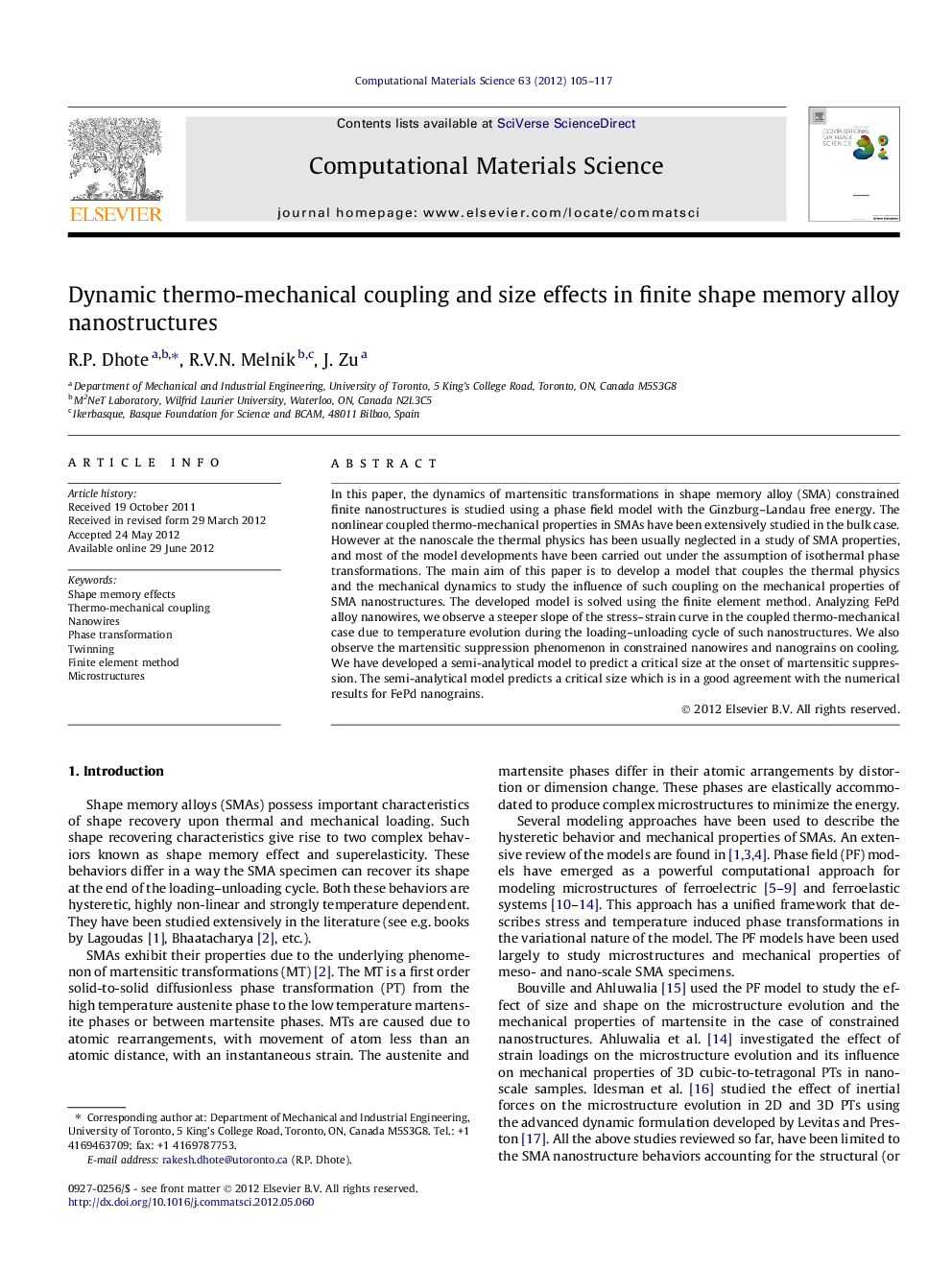| Article ID | Journal | Published Year | Pages | File Type |
|---|---|---|---|---|
| 1561472 | Computational Materials Science | 2012 | 13 Pages |
In this paper, the dynamics of martensitic transformations in shape memory alloy (SMA) constrained finite nanostructures is studied using a phase field model with the Ginzburg–Landau free energy. The nonlinear coupled thermo-mechanical properties in SMAs have been extensively studied in the bulk case. However at the nanoscale the thermal physics has been usually neglected in a study of SMA properties, and most of the model developments have been carried out under the assumption of isothermal phase transformations. The main aim of this paper is to develop a model that couples the thermal physics and the mechanical dynamics to study the influence of such coupling on the mechanical properties of SMA nanostructures. The developed model is solved using the finite element method. Analyzing FePd alloy nanowires, we observe a steeper slope of the stress–strain curve in the coupled thermo-mechanical case due to temperature evolution during the loading–unloading cycle of such nanostructures. We also observe the martensitic suppression phenomenon in constrained nanowires and nanograins on cooling. We have developed a semi-analytical model to predict a critical size at the onset of martensitic suppression. The semi-analytical model predicts a critical size which is in a good agreement with the numerical results for FePd nanograins.
► We developed a thermo-mechanical phase field model to study martensitic transformations in SMAs. ► We studied microstructure evolution and mechanical properties of nanostructures. ► Temperature does not change below critical size during microstructure evolution. ► Influence of temperature evolution is observed on stress–strain curve during loading–unloading. ► We developed a semi-analytical model to predict the critical size in SMA nanograin.
